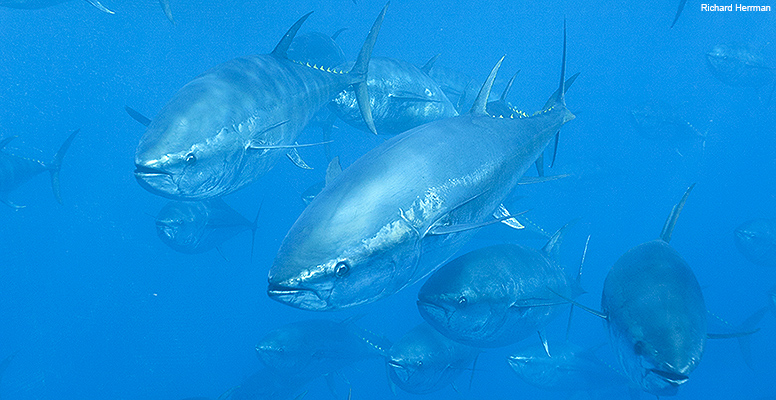The Bottom Line: Coming Together for Bluefin Tuna
It's not every day that fishermen and environmentalists agree. But in a significant move, the American Bluefin Tuna Association and the International Game Fish Association are partnering with The Pew Charitable Trusts to protect bluefin tuna, one of the most amazing fish in the sea. By working together, we might be able to help ensure a brighter future for this depleted fish.

This summer, the Obama Administration is expected to issue new bluefin tuna regulations for U.S. fisheries in the Gulf of Mexico and Atlantic Ocean. The National Oceanic and Atmospheric Administration (NOAA), the agency responsible for fisheries management, should seize this opportunity to protect bluefin tuna from dying needlessly on surface longlines.
This wasteful fishing gear stretches for 30 miles on average -- a length equal to 528 football fields, dangling hundreds of baited hooks. Surface longlines are used to catch yellowfin tuna and swordfish, but they catch and kill bluefin and approximately 80 other species of ocean wildlife. Most of these animals are thrown overboard, dead or dying. Because the Gulf of Mexico is the only known spawning area for western Atlantic bluefin, NOAA's proposed regulations should prohibit the use of surface longlines in the Gulf and encourage more selective alternative fishing gear.
By working together to end the waste of this remarkable fish, we can ensure a brighter future for this species and the fishermen who depend on it. - Lee Crocket
The American Bluefin Tuna Association is a diverse organization made up of commercial, charter, and recreational fishermen, shoreside businesses, fish buyers, and many others from Maine to Florida involved in the U.S. bluefin fishery. The International Game Fish Association is a not-for-profit recreational fishing organization committed to the conservation of game fish and the promotion of responsible, ethical angling practices through science, education, rule-making, and record keeping. Thanks to this important opportunity presented by the proposed bluefin regulations, we have come together to work toward a common goal.
The regulations proposed by NOAA could drastically reduce the unintentional catch of bluefin tuna and protect its spawning ground. This will lead to a healthier bluefin population and will benefit coastal communities that fish for the species using selective methods.
We're hopeful this partnership of fishermen and environmentalists will clearly illustrate to NOAA officials just how important bluefin tuna is to us all. By working together to end the waste of this remarkable fish, we can ensure a brighter future for this species and the fishermen who depend on it.



